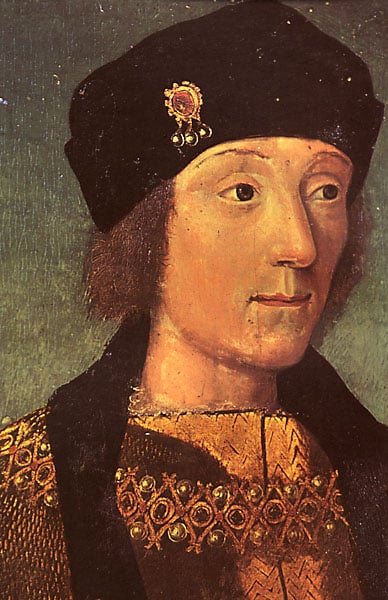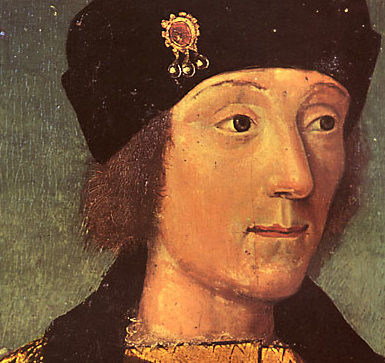
Henry Tudor’s main claim to the English throne derived from his mother, Lady Margaret Beaufort, who was a great-granddaughter of John of Gaunt, Duke of Lancaster (who was the fourth son of Edward III). A tenuous claim, but by 1483 all the other Lancastrian claimants to the throne were dead, making the then 26-year old Henry the best alternative to the unpopular Yorkist Richard III.
Richard had come to the throne after the death of his popular brother King Edward IV in April 1483. Since Edward’s oldest son was only twelve, Richard was named Lord Protector for him. Richard escorted the new King Edward V and his younger brother to lodgings in the Tower in preparation for Edward’s coronation…but that never happened. With the boys safely confined, Richard had Edward IV’s marriage to their mother declared invalid – making the boys illegitimate and ineligible to inherit the throne. Richard was crowned instead of his nephew.
Four months later came the first revolt to reinstate Edward V – though by this time a rumor began to circulate that the “Princes in the Tower” had been murdered (and Richard was of course the prime suspect). This was where Henry Tudor was put forth as the perfect candidate – especially since he would marry Elizabeth of York, who was next in line to inherit her father Edward IV’s crown. While this original rebellion collapsed, it was resurrected in 1485. Then, Henry, supported by French troops, began from Southern Wales where his popularity was strongest and where he recruited additional men. While he was still outnumbered by Richard’s forces when they met at Bosworth Field, he won the battle when Richard III was killed on the field.
The legend states that Richard’s crown landed in a hawthorn bush when he fell. When it was found, it was brought to Henry Tudor, who was first crowned king at Crown Hill, near the village of Stoke Golding. A contemporary account of the scene recounts, “Then they removyd to a mountayne hyghe, and withe a voyce they cryed ‘Kynge Henry’. The crowne of gold was delyveryd to the Lord Stanley, and unto Kynge Henry then went he, and delyveryd it, as to the most worthe to were the crowne and be theyr Kynge.”
Henry’s reign began immediately, and his formal coronation and anointing was set for two months afterward. It happened at Westminster Abbey on October 30, 1485 – 530 years ago today.
SOURCES:
As always, Wikipedia has great articles about Richard III, the Princes in the Tower, Henry VII, and the Battle of Bosworth. And the village of Stoke Golding has a wonderful account of the “Village Coronation of Henry VII.”
***
If you like my posts, you’ll love my books! My Seymour Saga trilogy tells the gripping story of the short-lived dynasty that shaped the Tudor Era. Jane the Quene skews romantic, The Path to Somerset is pure Game of Thrones (without the dragons), and The Boy King is a noir coming-of-age. Get them now through Amazon, Barnes & Noble, Kobo, and Apple, or even your local independent bookstore!

(PS Already read them? Did you love them? Then please review them – even just a stars rating! It makes a huge difference in helping new readers find them and would mean the world to me!)

Be First to Comment